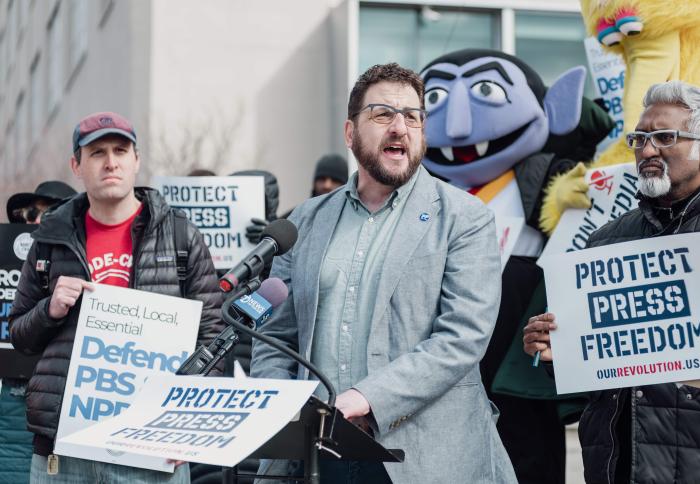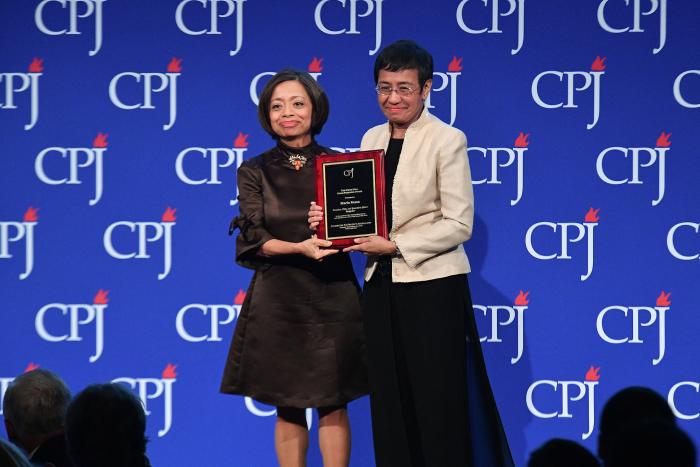Don't Be Fooled by Sinclair's Shell Games

On Wednesday, the Sinclair Broadcast Group announced its intention to divest some of the local-TV stations in its unprecedented merger with Tribune to comply with the remaining shreds of media-ownership limits that FCC Chairman Ajit Pai has yet to sweep away.
But even those minimal sacrifices come with some major caveats. Sinclair’s proposed “divestitures” look like nothing more than the same old shell games.
Let’s break it down:
Shell games on a national scale
Currently, broadcasters must comply with a national ownership cap that prevents them from owning enough stations to reach more than 39 percent of the total national television audience. Chairman Pai has worked hard to undermine this rule, reinstating an obsolete regulatory loophole called the UHF discount that allows broadcasters to count some stations for only half of the audience they actually reach.
But even with Pai’s loophole, the proposed Sinclair-Tribune merger is so unimaginably massive that it would still exceed the 39 percent national cap.
To evade this violation, Sinclair proposes to divest from stations in three markets: New York, Chicago and San Diego. In fact, Sinclair already has purchase agreements worked out to sell WPIX in New York and WGN-TV in Chicago to undisclosed third-party buyers.
That may sound like a plus — until you read the fine print.
At both WPIX and WGN, Sinclair plans to enter into “services agreement(s)” with the new buyers. These kinds of shady sharing arrangements have allowed Sinclair to sell stations to its own shell companies while maintaining functional control over the stations. Far from creating another diverse, competitive voice in local markets, these services agreements violate the spirit of the national cap. They are divestiture in name only.
And even if Sinclair were to truly give up stations in all three of those markets, it’d still be too damn big. The remaining stations would still reach more than 61 percent of the national audience — even if Pai’s fuzzy math will only count that as 37 percent.
Local market takeovers
When it comes to local ownership rules’ compliance, Sinclair’s proposals are just as empty. The broadcaster proposes to divest at least one station without any caveats in only five markets: Des Moines, Grand Rapids, Richmond, Salt Lake City and St. Louis.
But in Seattle, Oklahoma City, and Greensboro, North Carolina, Sinclair’s promises come with a big red asterisk: more shady sharing agreements. If the FCC accepts these divestitures, Sinclair could own two stations in Oklahoma City and operate two more via service agreements, effectively controlling four stations within the same market.
Taking advantage of the FCC’s decision to weaken local ownership rules last November, Sinclair has also requested permission to openly own powerful station duopolies in three markets. In Greensboro, Harrisburg and Indianapolis, the Sinclair-Tribune merger would leave the combined broadcaster owning two stations ranked among the top-four stations in the market — a result that FCC rules explicitly prohibited last year.
Now the FCC will consider allowing top-four duopolies on a case-by-case basis. With Chairman Pai’s aggressively pro-media consolidation ideology leading the way, it’s hard to imagine Sinclair’s requests being denied.
Pai’s other grievous blows to local media-ownership rules are already taking effect.
According to the FCC’s old rules, Sinclair would have been required to divest one of the two stations it would own in Portland, Oregon, because the result would leave Portland with fewer than eight independent broadcast voices in the market. Since Chairman Pai eliminated the eight-voices test last fall, Sinclair proposes to own both stations outright.
And Pai isn’t done gutting media protections. Next, he’s teed up a proceeding to consider raising or even eliminating the 39 percent national ownership cap altogether — a decision that only Congress has the legal authority to make. Sinclair is leaving itself plenty of wiggle room to buy up even more stations if this last barrier against runaway consolidation finally breaks.
Don’t be fooled
All in all, Sinclair has not promised much, and what it has promised is not set in stone. The broadcaster may amend its divestiture proposals until the transaction is closed — and may enter into even more sharing agreements with supposedly divested stations
We’ve seen these shell games before. Sinclair has a long history of spinning off stations to sidecar companies like Cunningham Broadcasting or pundit Armstrong Williams’ Howard Stirk Holdings in order to get a merger approved — and then controlling those stations through sharing agreements. This kind of covert consolidation allows Sinclair to skirt the last remaining ownership rules and solidify its unacceptable control over our local communities and the national media conversation.
Sinclair’s meager divestiture proposal shows the company is only going through the motions, counting on a complicit FCC to hand-wave away its blatant threats to competition, diversity and localism.
This deal isn’t done yet. Tell the FCC it’s time to cancel this terrible merger.





